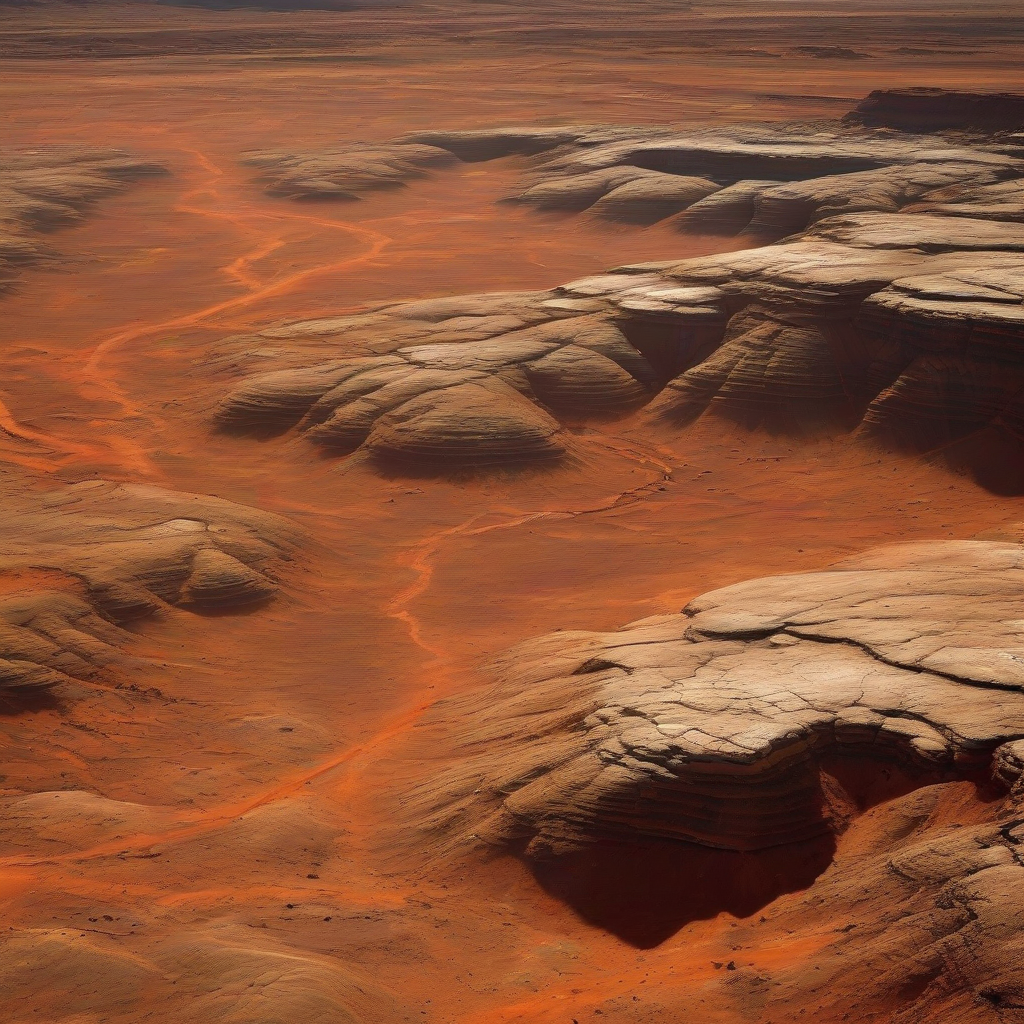# Signs of Life? Exploring Martian Soil and Ancient Water with NASA Missions
The Red Planet has always fascinated humanity. Its fiery hue, visible even to the naked eye, has sparked tales of alien civilizations in the past and scientific ambitions in the present. Mars stands as one of the most promising candidates for signs of ancient microbial life beyond Earth. But how do we find these signs? NASA's ambitious missions to explore Martian soil and uncover evidence of ancient water are bringing us closer to answering one of the greatest questions in science: Are we alone in the universe?
A Planet of Mysteries: Why Mars?
Mars may be cold and dusty today, but billions of years ago, it was a very different world. Geological evidence suggests that Mars once had flowing rivers, immense lakes, and even oceans. This ancient water could have created environments capable of supporting microbial life. The discovery of these features has been pivotal in shaping NASA's Mars exploration strategy.
Unlike Earth, Mars lacks a magnetic field and a thick atmosphere, which means its water evaporated or froze over time. However, the tantalizing signs of liquid water in its past remain locked in its rocks, soils, and polar ice caps. By probing these clues, NASA aims to uncover the secrets of Mars' ancient habitability.
But how do we look for ancient life on a barren planet? The answer lies in the Martian soil and rocks, where the story of Mars’ watery past is written.
---
Unearthing Clues: What Can Martian Soil Tell Us?
Martian soil is not just dirt—it’s a treasure trove of information about the planet’s history. NASA’s rovers, landers, and orbiters have been meticulously studying the soil to determine its composition and search for chemical fingerprints of past life.
The Curiosity Rover: Chemistry on Wheels
NASA’s Curiosity rover, which landed on Mars in 2012, has provided groundbreaking insights into the planet’s soil and rocks. One of Curiosity’s key discoveries was evidence of an ancient lakebed at Gale Crater. By analyzing rock samples, Curiosity found that this lake was not too acidic or salty but instead had neutral water chemistry—conditions that could have been suitable for microbial life billions of years ago.
Curiosity uses a suite of instruments, including its Sample Analysis at Mars (SAM) laboratory, to “sniff” for organic molecules. In 2018, Curiosity detected complex organic molecules preserved in 3-billion-year-old rocks. While these molecules are not definitive proof of life, they are building blocks that could have supported ancient life forms.
Perseverance and the Quest for Biosignatures
NASA’s Perseverance rover, which landed in Jezero Crater in 2021, is taking the search for life a step further. Jezero Crater was once home to a river delta—a prime location for preserving traces of past life. Perseverance is equipped with advanced tools, such as the SHERLOC (Scanning Habitable Environments with Raman & Luminescence for Organics and Chemicals) instrument, which can detect tiny concentrations of organic materials and minerals.
One of Perseverance’s most exciting tasks is collecting and storing rock and soil samples for future return to Earth through the ambitious Mars Sample Return mission planned by NASA and the European Space Agency (ESA). By bringing Martian soil back to our planet, scientists can use advanced laboratory techniques to search for biosignatures—chemical or physical indicators of past life.
---
The Water Story: Following Ancient Rivers and Lakes
Water is essential for life as we know it. On Mars, finding evidence of ancient water is like following a trail of breadcrumbs to discover potential habitats for life. NASA's missions have revealed a planet shaped by water, both on the surface and beneath it.
Orbital Insights: Mapping Water from Above
NASA’s orbiters, such as the Mars Reconnaissance Orbiter (MRO) and Mars Odyssey, have played a crucial role in identifying watery landscapes. Using high-resolution cameras and spectrometers, these spacecraft have mapped dried-up river valleys, deltas, and lakebeds. They’ve also detected hydrated minerals, such as clays, which form in the presence of liquid water.
In 2018, the MRO made a groundbreaking discovery: evidence of a liquid water lake beneath Mars’ south polar ice cap. This salty lake, buried under layers of ice, raises intriguing questions about whether microbial life could still exist on Mars today in subsurface environments.
Ancient Rivers in Jezero Crater
The Perseverance rover’s landing site, Jezero Crater, was specifically chosen because it once contained a vast lake fed by rivers. The delta deposits within the crater hold clay and carbonate minerals, which are excellent at trapping and preserving biosignatures. As Perseverance explores this terrain, it’s uncovering the history of water flow and the potential for life
